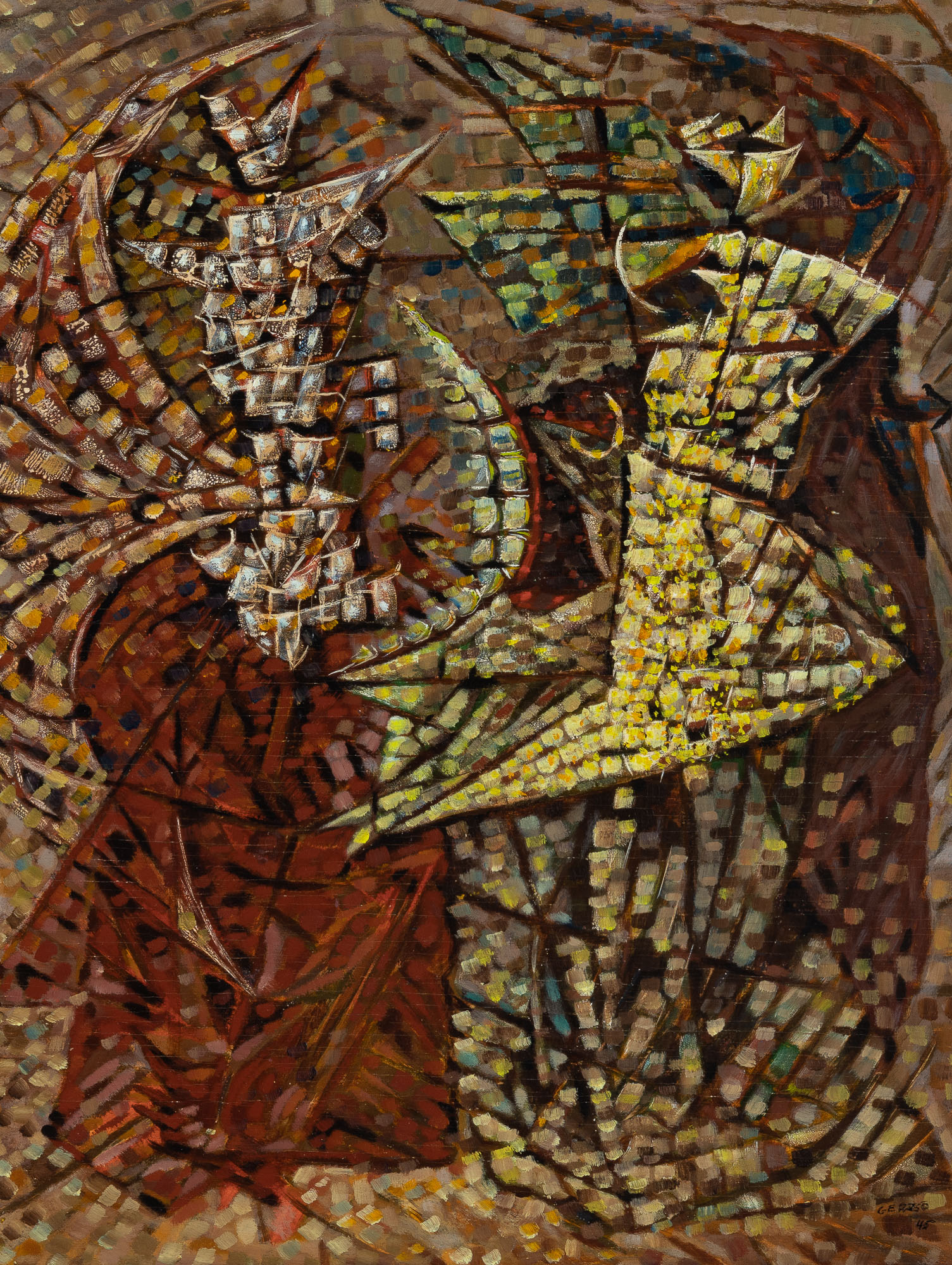
Gunther Gerzso
Mexican, 1915-2000
Gunther Gerzso was born in 1915 in Mexico City to a Hungarian father and German mother. After his father’s early death and the turbulence of the Mexican Revolution, his family relocated briefly to Europe before returning to Mexico in 1924. Educated in both Mexico and Switzerland, Gerzso grew up at the intersection of European and Latin American cultures.
Initially trained in set design at the Cleveland Play House, Gerzso built a distinguished career in stage and film design, earning multiple Ariel Awards for his work in Mexican and American cinema. By the late 1930s, he had begun painting seriously, gradually shifting his focus to fine art. In 1940s Mexico City, Gerzso connected with European surrealists such as Leonora Carrington and Remedios Varo. These encounters, combined with his own architectural interests, informed a turn toward abstraction, marked by geometric structures, layered color fields, and references to pre-Hispanic architecture.
Gerzso’s mature style combined European modernism with an engagement in Mexican cultural heritage. He received a Guggenheim Fellowship in 1973 and Mexico’s National Prize for Fine Arts in 1978. Celebrated by Octavio Paz and other contemporaries, Gerzso remains a pivotal figure in Latin American modernism. His work continues to attract collectors for its architectural clarity and cultural resonance, bridging Mexico’s artistic legacy with the global evolution of abstraction.